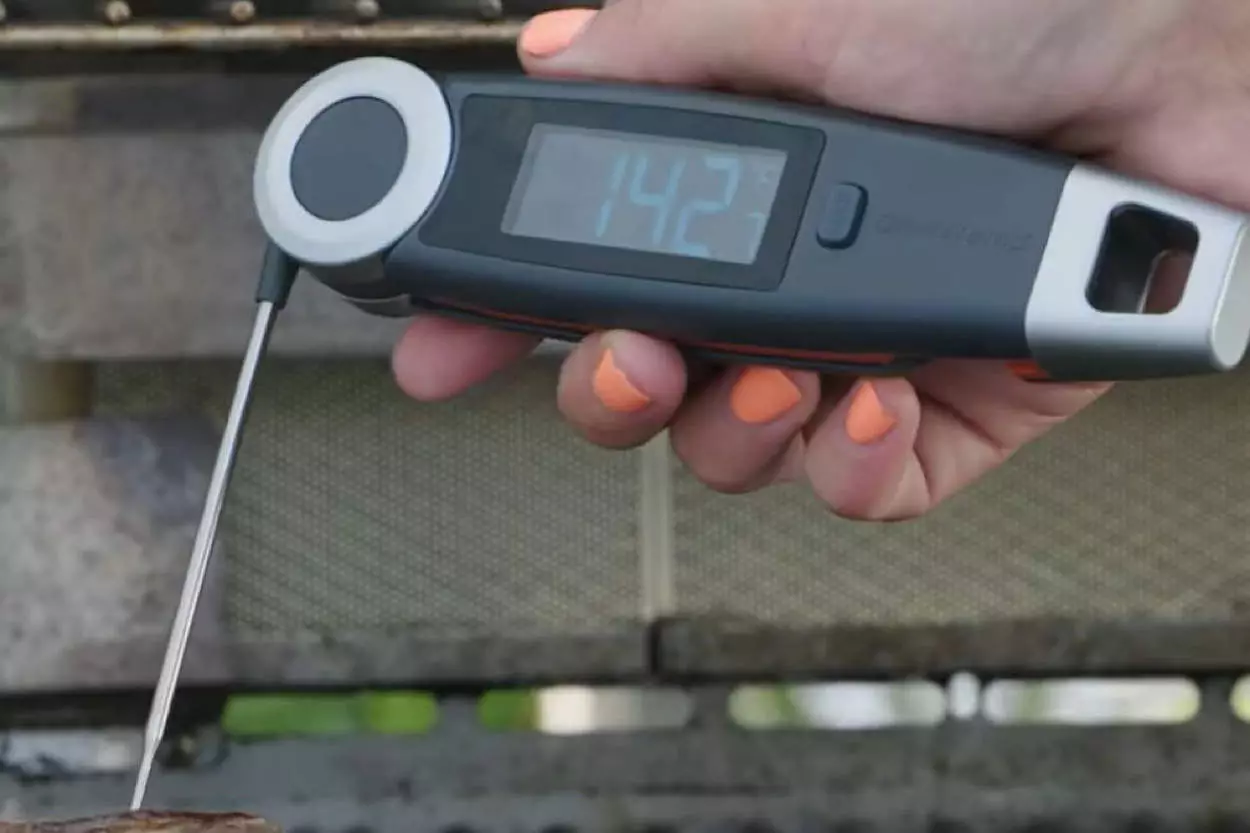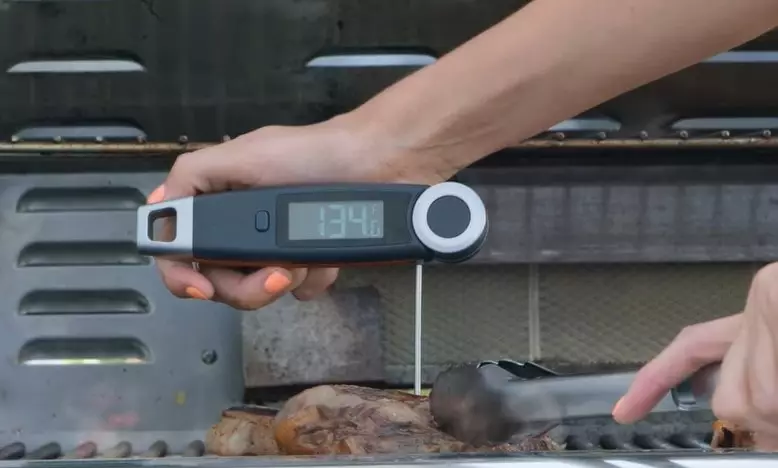
How Far to Insert a Meat Probe: Guidelines and Best Practices
Having a meat thermometer in the kitchen is non-negotiable. This tool enables you to read the correct temperature and avoid overcooking or undercooking the food by checking the internal temperature. However, a tool is only as good as how you use it. Discover the best practices for using a thermometer, such as how far to insert a meat probe to check the temperature accurately.
Table of Contents
What is a Probe Thermometer?
A probe thermometer comes with a probe that you must insert into the meat. Once the probe comes into contact with the meat, it records the internal temperature to tell whether the food is cooked. For this reason, a probe thermometer is an essential kitchen tool to ensure food safety.
Nowadays, probe thermometers are available in a wide range of types:
- Dial thermometers come with a long probe and function like a watch. However, they require manual reading, so you must keep an eye on the pin to ensure it is at the correct temperature. You can find them in oven-safe variants, too.
- Digital thermometers are the most common type these days. They are easier to read since the screen automatically displays the temperature. This thermometer is also more accurate than one with a dial.
- Thermometer forks are a modern model of thermometer. They are essentially forks that can read the temperature when grilling or roasting meat. They work like carving forks but can detect the food’s temperature when you stick them in.
How Far to Insert the Meat Probe
You must insert the probe into the meat about ½ inch deep. However, the depth when inserting the probe depends on the thickness of the meat. So if you’re dealing with a thicker piece of meat, insert it deeper – about an inch into the meat.
Inserting the meat probe isn’t just about depth, though. There is a technique you must follow to ensure that you can get the most accurate reading when using a probe thermometer.
The placement of the probe is just as important as the depth. Place the probe into the deepest part of the meat, but you must avoid any fat, bones, or gristle as they could make your reading inaccurate.
It’s also ideal to wait at least ten seconds before you take out the thermometer. This is because you must give the thermometer probe enough time to register the thermometer, which is essential even for instant-read models.

Guidelines for Placing the Probe Correctly
Follow these guidelines to maximize your use of a probe thermometer and get accurate readings every time.
- Master the Temperature Gradient
The temperature gradient is one of the essential aspects of cooking that you must understand, primarily if you rely on temperature readings to tell if food is ready. It means that the temperature of your food differs in various areas of the meat (especially when it’s a big piece of meat).
For example, the exterior part of the meat will be hotter than the interior. To ensure food doneness, always insert the probe into the center to ensure it is cooked through. If you only measure the outside of the meat, it will be inaccurate as the temperature might not be even, meaning the inside of the meat could still be raw.
- Find the Thermal Center
This takes you to the next most important part of correctly using your thermometer: finding the thermal center. The thermal center represents the innermost part of the meat. This part of the meat will be the “coldest.” Your goal is for the thermal center to hit the recommended internal temperature for that particular meat. Only when the thermal center hits the ideal temperature can you be sure that the food is safe to eat.
- Master Your Use of a Probe
Every probe is unique. When using a probe thermometer, you must familiarize yourself with the specific model. They vary in the sensor’s sensitivity and the minimum insertion depth requirement.
However, all probes are the same in that the concept of thermal gradient applies to its use. Therefore, you should always find the thermal center to ensure accurate readings.

Probe Placement Tips for Various Types of Probes
As mentioned earlier, all probes are different. Therefore, following the best practices for using different types of probes is essential.
An oven-safe thermometer is a probe that can safely be used inside the oven as the meat cooks. First, place the probe into the thickest part of the meat, ensuring an equal thickness on all sides of the meat. This placement ensures that your probe hits the thermal center and that you can accurately tell if the food is cooked.
If you’re using an instant-read dial thermometer, it’s challenging to position the probe due to the presence of the dial. However, follow the same guidelines on where and how far to insert the meat probe to get accurate readings.
No matter what thermometer you’re using, it’s vital that you don’t let the probe touch any of the cooking containers. If they do, it could influence the reading of the thermometer. Some cooking vessels also heat up faster, which could be a problem if your meat is not yet done. Make sure your thermometer is not picking up on the temperature of the cooking container by correctly positioning the probe.
In addition, always take multiple readings. The recommendation is to leave the thermometer probe in for at least 10 seconds to get the correct reading. Then, you can validate this reading by taking another check with the probe to see if it gives you the same reading. If you get different readings each time, there is something wrong with how you position the probe. The goal is to get the exact temperature reading for every try.
Conclusion
Hopefully, you can use this guide to be more confident in using a probe thermometer when cooking. Follow the guidelines on how far to insert the meat probe and the techniques to ensure proper placement for the correct reading.
Discover Other ChefsTemp Products
Discover more recipes and learn kitchen tricks by joining our cooking family on Facebook.
You may also like:















